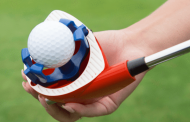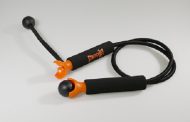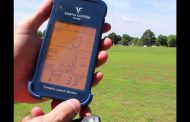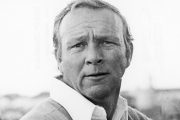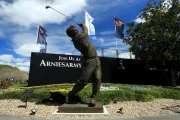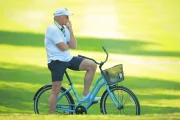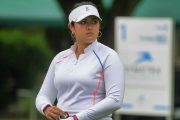Today, we have some guidance on how to ensure you have a good, solid backswing. This is something which can be practiced at home or in the office, in addition to the range. Basically, there’s an order of doing things here, which, when remembered, will help you to improve the backswing element of your golf swing. We are using a right-handed golfer in our examples.
Takeaway
The first thing that should start back is the face of your club. At this point, your arm needs to stay close to the right side of your body and your weight should be evenly distributed. As your hands begin to pass your right leg, your weight should start to move to your right leg. Once your club is parallel to the ground, it is time to check if you are still parallel to your target line. If you are not, begin the takeaway again until it is, as this shows that your swing is on the correct arc. Also, check that your club face is parallel to your hands.
Tip – A great way to imagine or even practice the takeaway, is to think of a rugby player passing the ball. As the player passes the ball, his arms and hands direct his chest to the way that the ball is travelling. You could even use a small cushion or something similar when at home or work, to practice this.
Halfway
With your club and body in the ideal position, having completed the takeaway element of the backswing, it’s time to move on to the halfway stage.
With your club in the takeaway position, allow your wrists to cock upwards, as your weight continues to move to the right side of your body. As you do so, your right arm will begin to bend at the elbow but your left arm will remain straight. At this point, your club should be at a 90 degree angle to your left arm and should also intersect your right shoulder.
With your shoulders well in to their rotation, you should begin to feel your hips becoming a part of the back-swing process.
Top of the Swing
The position you find yourself in at the top of the back-swing is very important, as this position will have an influence on your downswing.
At the top of the back-swing, your shoulders need to turn as close to 90 degrees as you can get them. Do not force your shoulders in to position, as this will result in a loss of control, only turn as much as is comfortable for you to do so.
Keep you head still and ensure that you left arm remains straight but not stiff. Imagine your body is a clock face and do not allow your club to go beyond 3 o’clock, with your hands sitting at 11 o’clock. If you wish, you can position a mirror to check your club and hand position when practicing at home.





